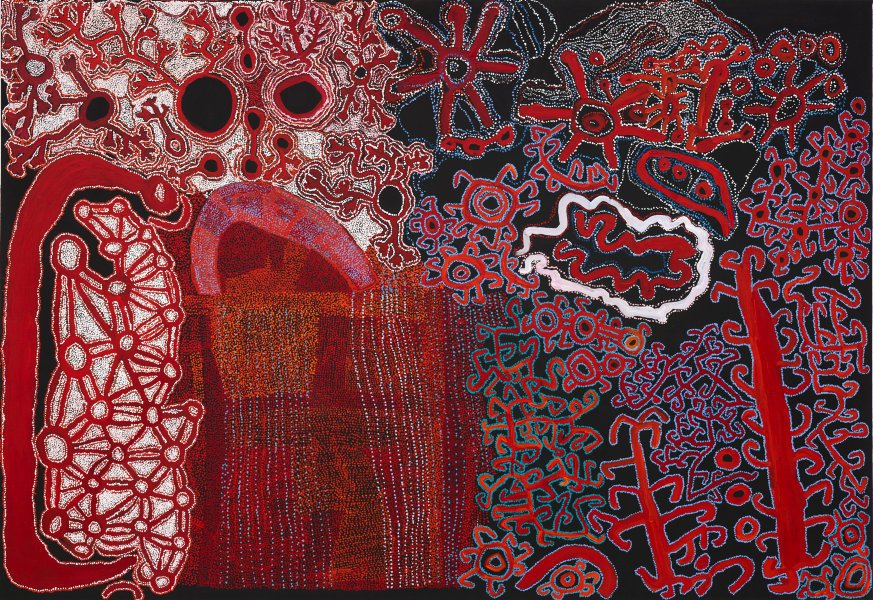February Art: land
In art landscapes arrive in many ways. In fourteenth-century China they come with calligraphic poetry; in seventeenth-century Europe laden with classical architecture and myth; in nineteenth-century France they grow outdoors en plein air. They can take a single perspective, but also take us on a journey, as shapes are arranged, stories told, lands navigated. Aboriginal Australia possesses probably the oldest continuous tradition of landscape art, but it is not landscape as the west knows it. Nor is it a static tradition, but a moving one. This collaborative piece from five Pitjantjatjara Australian artists of the central desert near Kalgoorlie, Western Australia, Ned Grant, Fred Grant, Patju Presley, Lawrence Pennington, and Simon Hogan, together retells a creation story from the elders of Spinifex in new ways.
The two men or ‘Wati Kutjara’ (2019) tend to be represented by the animals they embody, the Mula Maru (Black Nosed Monitor) and Tingka (Sand Goanna), and each of five parts of the canvas tells of a location, a staging post, a moral narrative, as part of their journey through places familiar to the artists, as they interact with emus, flowers, a soaring eagle, and rain. Recently traditional materials and colours like bark and mud have been changing to linen and acrylic: this means contemporary Aboriginal Australian art is alive with new colour as well as new meaning.


